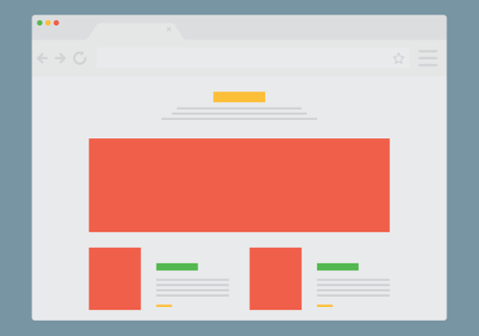There’s no such thing as a typical “day in the life” of a user experience designer. Different variables and requirements make each new project an adventure. “What you’re going to be doing every day is kind of ambiguous,” said Matthew Schulz, a UX designer at UnitedHealth Group. “It depends on what product you’re working on, and what the needs of the product are. The product you’re working on changes so much from day to day.” UX developers may find themselves working on everything from front-end development to wireframe experiments. In organizations with a lot of cross-departmental collaboration, they might even participate in activities such as helping marketing people improve metrics. Whether you’re looking to enter the UX market for the first time, or just want to improve your UX skill-set, here are some suggestions for reaching your goal:
Figure Out What Type of UX You Want to Pursue
“A day in the life of a UX designer depends a lot on the environment that you’re in, but there are some basic things that people who do user experience design tend to do,” said Laura Klein, Principal at Users Know and author of UX for Lean Startups. “They tend to make wireframes, make prototypes, and figure out use cases, but beyond that there’s a huge variety.” What you’ll be working on depends on the size of the company you’re working for, and whether you’re on a cross-functional team or in a siloed organization; in the latter scenario, certain departments or teams are less likely to share information with others in the company. The typical month of a UX designer working in an agency could look vastly different from that of someone working in a consultancy. And a company that’s Agile has a very different process than one that uses BDUF (Big Design Up Front) Waterfall methodology. Other variables that affect the type of work you’ll be doing as a UX designer include your position and level of experience. Junior UX designers at agencies might end up doing production work such as Photoshop layer comps, wireframes, or interactive prototypes using Sketch or InVision. Meanwhile, higher-level UX designers may interact more with the client to figure out the scope of a project and oversee junior designers’ work. Some UX designers may work on layout, flow, and visual designs without doing any user research, while others could spend a huge chunk of their day watching people and studying how they do things, in order to pinpoint problem patterns in how users interact with a tool. From there, designers ideate solutions, run usability tests, and work with engineers to make changes. For example, a week in the life of a UX designer could start with some bad news: activation metrics on a particular app are terrible. “A UX designer might do some observational testing, or some generative testing or generative research of users, talk to people and understand what their needs are,” Klein said, “and if there are usability problems, and basically try to identify why the metric was the way it was.” Talking to users could take as long as a few weeks, depending on the company and the scope of the project. After gathering data, Klein likes to share information with the broader team “so we can all tell what did the research tell us, what kind of problems we are seeing, and then try to ideate on solutions.” Following that team meeting, the next stage could involve some sort of brainstorming. The team could develop a hypothesis about which design aspects affected user behavior in a particular way. A UX designer might sketch out a solution for the team and other stakeholders. After a solution is agreed upon, the UX designer may develop a prototype (Klein uses HTML, JavaScript and CSS), engage with usability testing, and work with engineers to get it built.
Learn to Wear Many Hats
Schulz earned his design chops and Photoshop experience working as a graphic designer at an agency before transitioning to a UX role at UnitedHealth Group. “It was more of the old-school scenario, where you’d create a design make it pixel perfect, chop it up and hand it to developers, and never see it again,” he recalled. His current role, however, is more hands-on when it comes to diagnosing problems. In addition to his solid visual skills, he relies on some coding experience. His ability to work in Sketch, Photoshop and Illustrator helped him land his current role.
Speak with Users
If you’re doing visual design and trying to transition to UX work, or if you’re technically a UX designer but not doing user research in your current role, Klein suggests you get out there and start talking to users: “Sometimes you can find someone else in the company who’s already doing that and see if you can go with them.” It can be difficult to convince upper management that you need to talk to users before deciding what to design. “When people say, ‘We need to develop this feature,’ start asking why,” Klein said. “Instead of thinking about features, think, ‘What [user] behavior are we trying to change?’” This will not only improve your design, but also get you in the right mindset for future UX roles.

